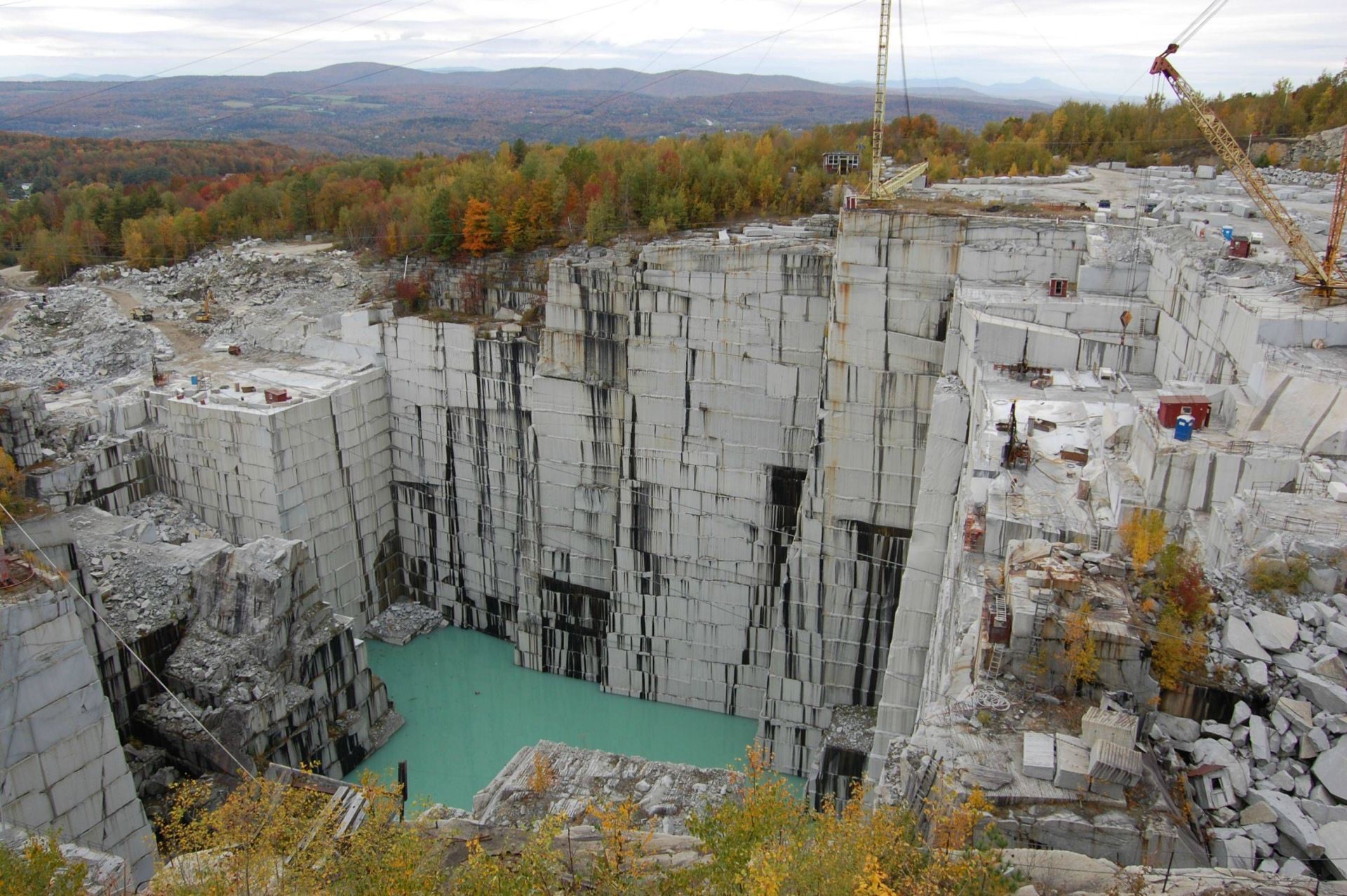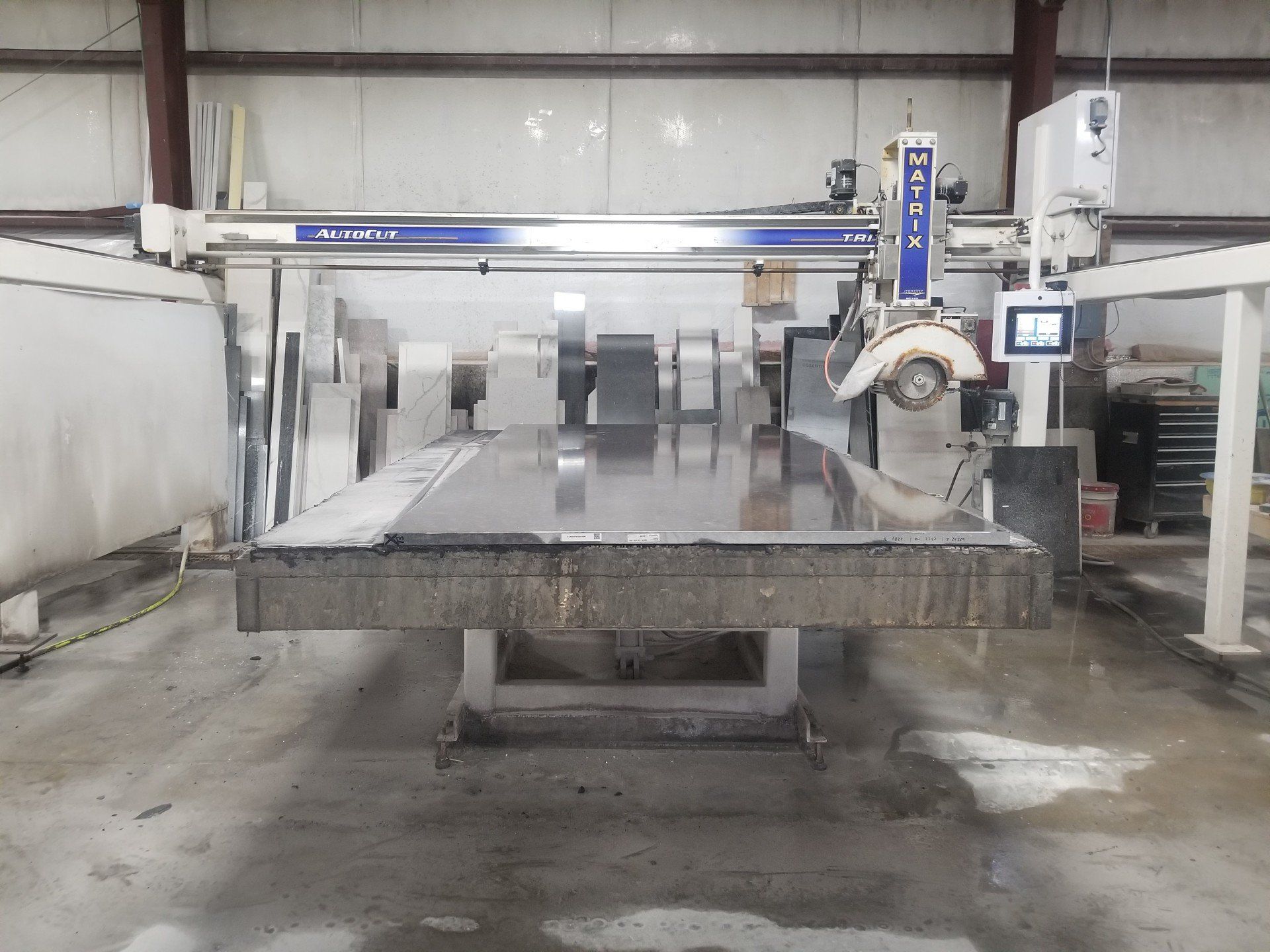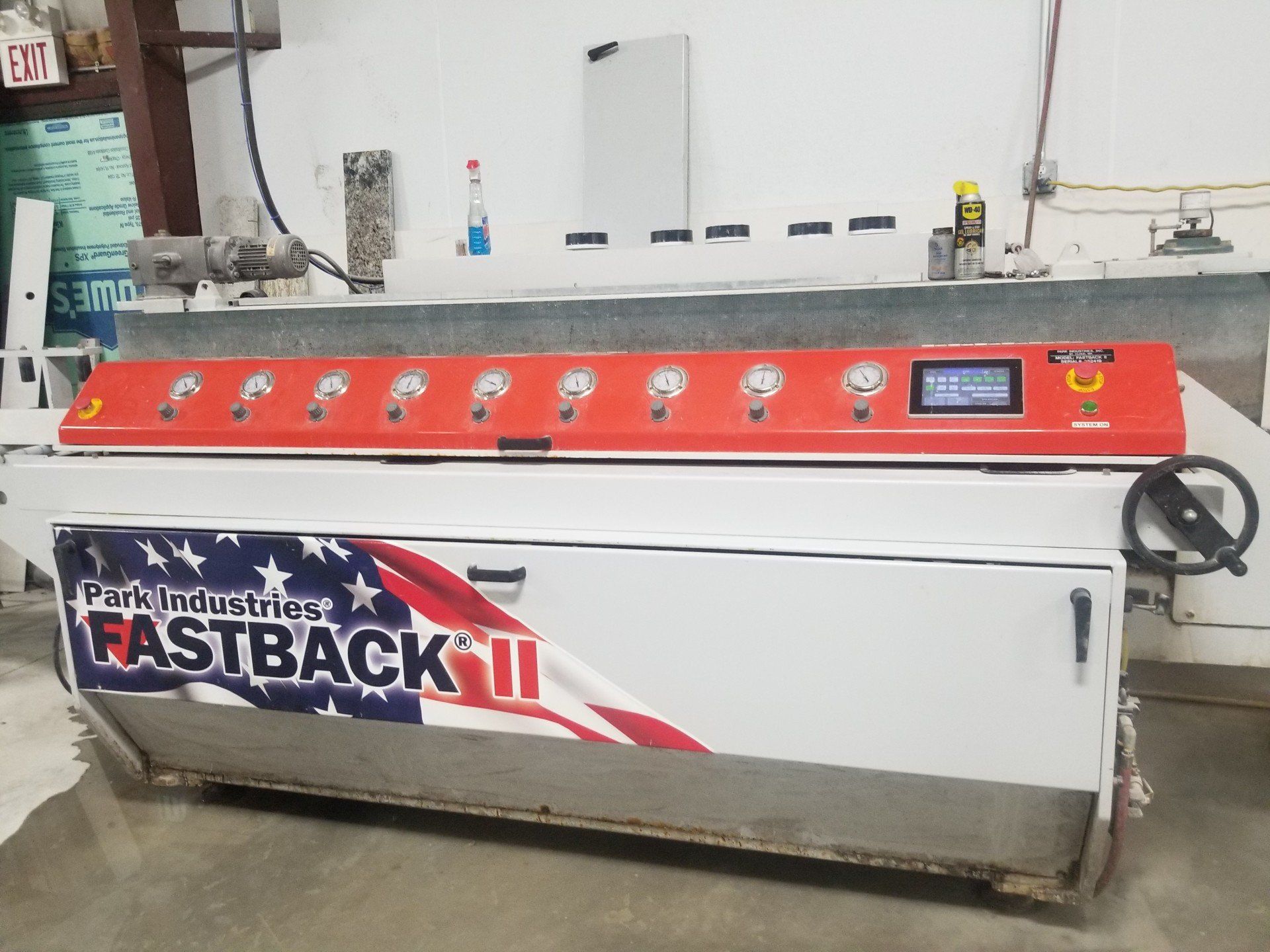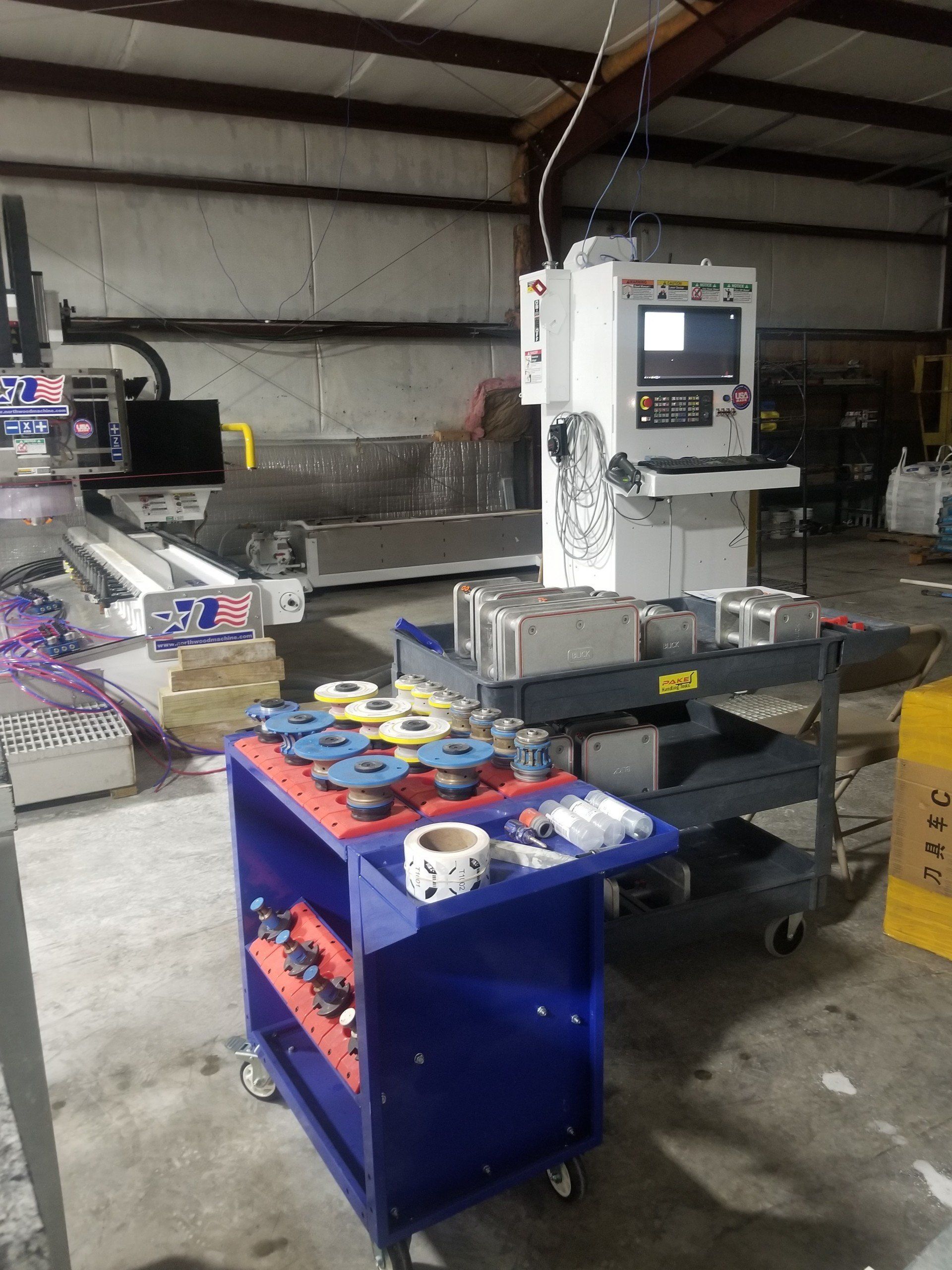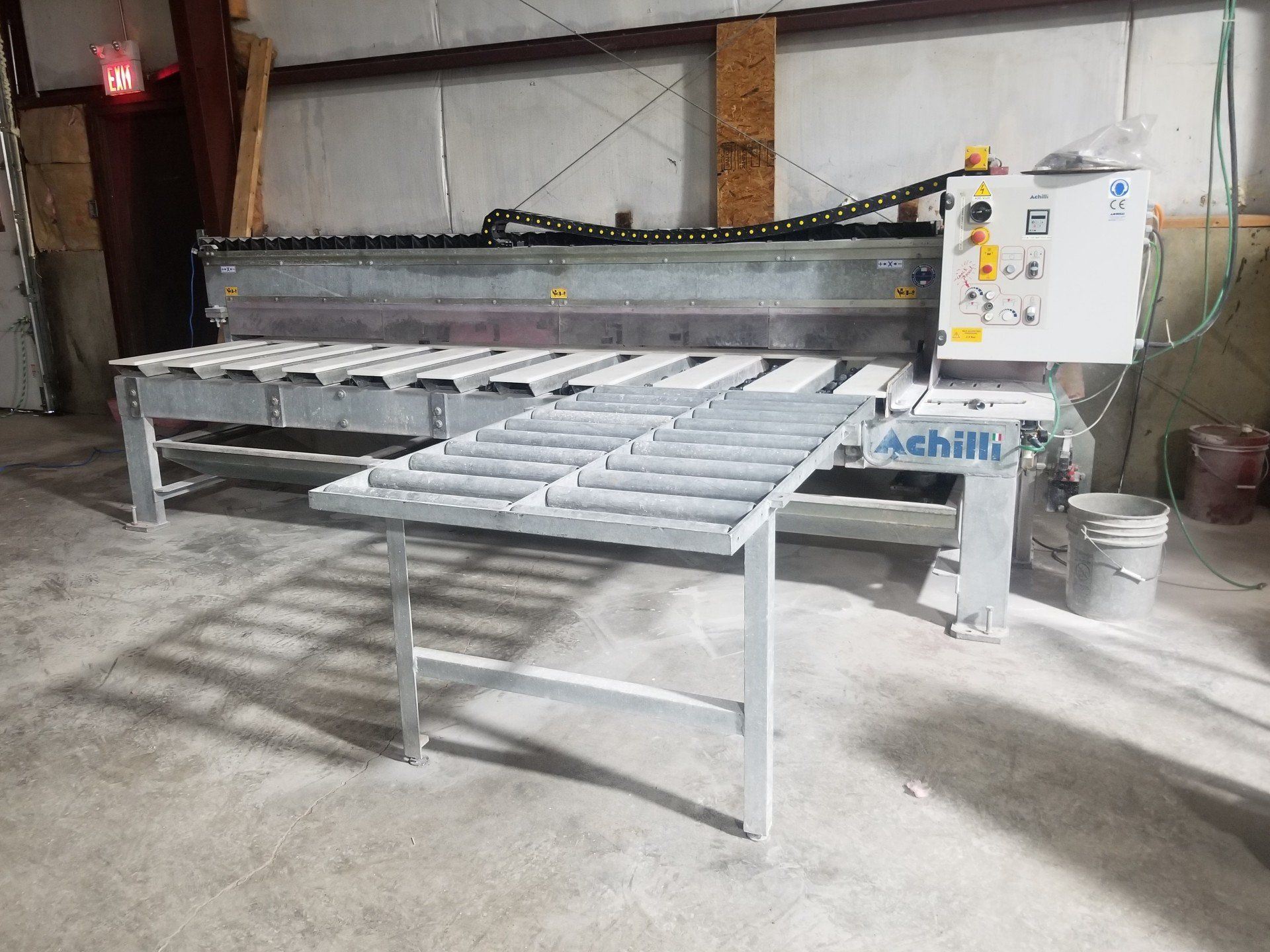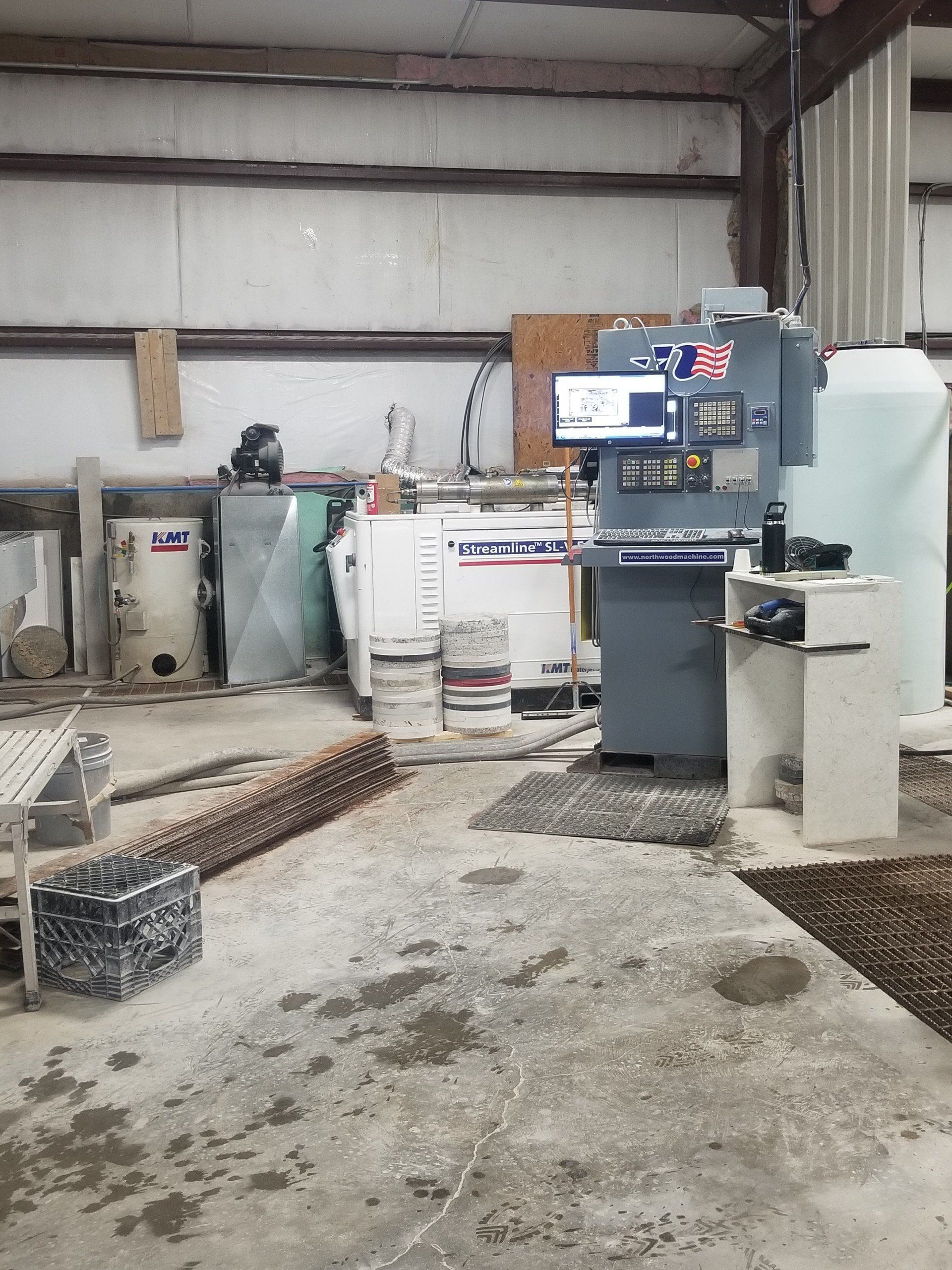Your Local Stone Experts
You can always count on the team of professionals at Prestige Stone, LLC to provide you with the best stone cleaning, fabrication and installation services in the Tri-State Area. Call 513-738-0093 today.
Seams
We take the extra time to ensure your seams come out looking like art with book match slabs. Natural Stone does vary but all efforts will be made to insure excellent seam matching. All seam colors are mixed to a perfect match.
Machines at Prestige Stone
Triton II Matrix Bridge Saw
This machine a USA made machine for cutting slab stone for countertop fabrication. Prestige uses this machine to fabricate our straight cut kitchen countertops and bathroom countertops. Making it a great addition to our slab cutting machines for quick safe fabrication.
Fast Back II
This machine will edge, polish and chamfer backsplash, vanities, and countertops in one single pass. Get exceptional, quality edges at a rate up to 150 lineal feet per hour. Prestige Stone uses this machine to finish our backsplash edges, appliance edges, & a Micro Bevel edge if specified by a customer.
SW-138EDS Northwood CNC Router
This piece of machinery is used to polished finished edge after being cut on our Sawjet. This model exceeds the need of most stone fabricators. The large work envelope (156" x 96") allows the fabricator to process an entire slab worth of countertops in one setup. Prestige Stone is proud to have this piece of machinery running in our shop!
Achilli MSA 45 Degree Miter Saw
This machine is used to cut all of our mitered pieces to create a perfect fit for all mitered drop edges & waterfalls. This machine is used with water prevent much chipping in the process. Prestige prides themselves on clean miters and this machine is part of our reasoning.
Northwood NW1217 Single Table Saw-jet
This piece of machinery has changed Prestige Stone for the better. The Sawjet was created to maximize fabrication time and a fabricators ability to create the perfect look for your home. This table cuts almost all kitchens that come through our doors. This is a fast & efficient way to cut and jet each countertop.
Extensive Stone Cleaning Services
Marble, Granite, Limestone, Travertine, and Slate
are all commonly used in both the commercial and residential industries. These stones come from quarries located all over the world, and are processed into slab and tile. Standard size
for stone tile is 12″ x 12″; many stones are also available in larger sizes such as 16″ x 16″, 18″ x 18″ and 24″ x 24″;. Slab sizes average about 5′ x 9′, and are generally available in two different thicknesses: 3/4″ and 11/4″ thick. Although all of these stones offer a luxurious and beautiful surface, they have different properties that make them more or less practical for certain areas.
The Different Types of Stone:
Granite - The Igneous Rock
Mainly composed of Quartz, Feldspar, Mica, & Hornblende, it has a characteristic granular appearance.
Granite is extremely durable, it is resistant to acids, and it does not scratch easily with everyday use. For these reasons it is recommended for kitchens and high-traffic floors.
Marble - The Metamorphic Stone
Composed mainly of Calcite and Dolomite, with many other minerals included. It
began as a Limestone, but with the addition of minerals and metamorphic activity many colors and veins were formed. Because the composition of the stone is mostly alkaline, it reacts with acids such as lemon, vinegar, tomato, and some cleaning agents. Marble must be treated with care to keep its high gloss finish. Marble is recommended for light-use areas such as bathrooms, fireplaces, and furnishings.
Limestone - The Sedimentary Rock
Made primarily of calcium carbonate, and its usage is the
same as Marble. Limestone that is hard and dense can be polished to a high gloss finish; Limestone that is softer may not take a polish.
Travertine - is also similar to Marble
But when formed, carbonated spring water was trapped, and as the water dissipated, holes were left. This gives Travertine its characteristic look with linear crevices and pitting that can be left as is or filled. If left unfilled, Travertine may not be suitable for horizontal surfaces.
Slate - is Clay and Shale
That has metamorphosed. Choices of color in slab are limited, as slabs are available in only very small sizes. Slate has a more rustic, informal appearance, and is commonly used for decks, walkways, and flooring.
Quartz - is composed of silicon dioxide
Quartz
is composed of silicon dioxide, and is found in an impressive range of varieties and colors. There are many names for different varieties. It is the most common mineral found on the surface of the Earth.
Granite, Marble, Limestone, and Travertine
Counters all need to have solid support within 3″ of the edge when dealing with 3/4″ thick stone. A sudden, jarring impact can be most damaging, even with some of the thicker stones.
Because all of these stone are created by nature, they do not have the uniform consistency of man-made products.
Because all of these stone are created by nature, they do not have the uniform consistency of man-made products.
Blocks of stone are taken from the quarry, cut into slabs and polished. Pitting, fissures and other natural flaws are common in natural stone. Slab sizes vary from stone to stone, therefore creating the varying need for joints.
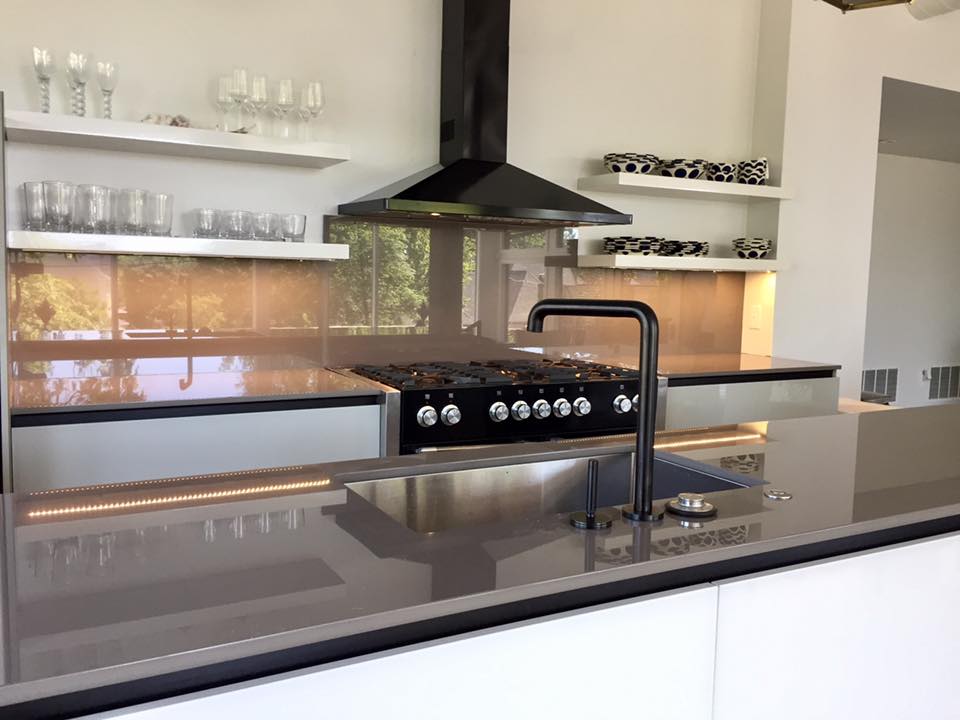

1 Year Installation Warranty
"If you're looking for the job done right the first time, this is the company you want!"
- Walter R.
"Great company very pleased with their work highly recommended!!!"
- Brandon Whittamore
“Mike,
Your team was very professional and pleasant. Thanks so much!"
-Dionn
Fill out the form below if you have any questions about our services. We will get in touch with you as soon as possible.

